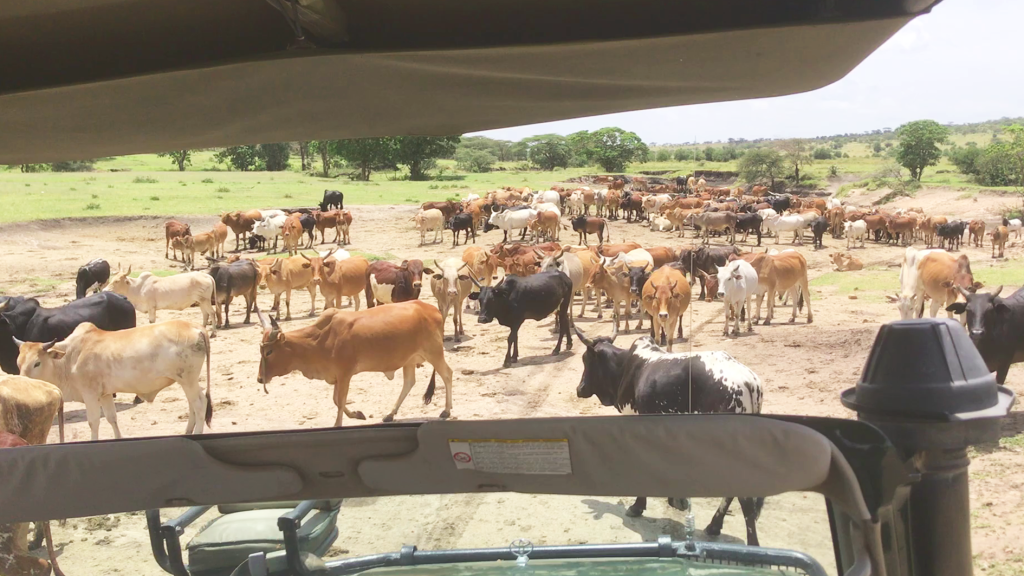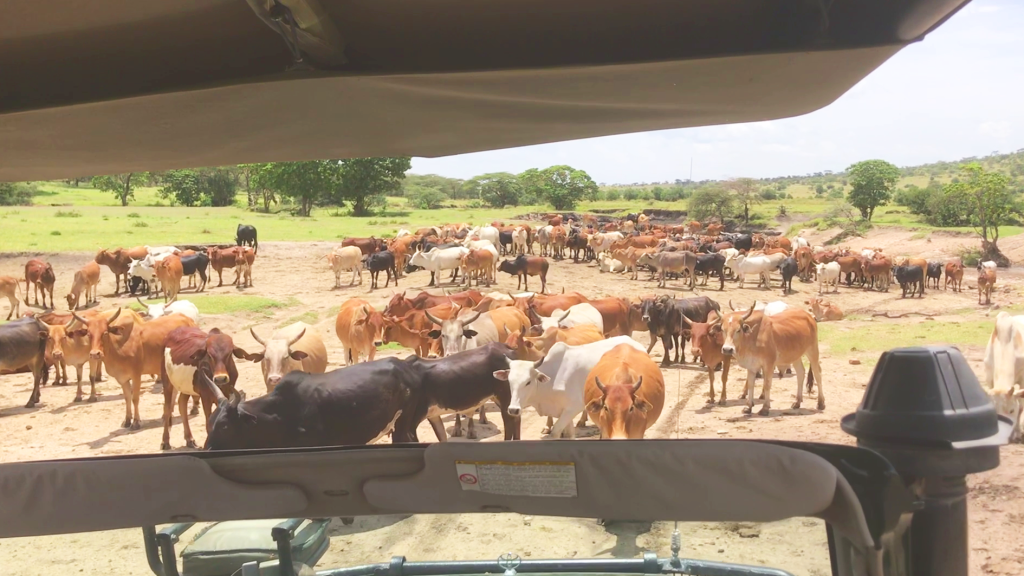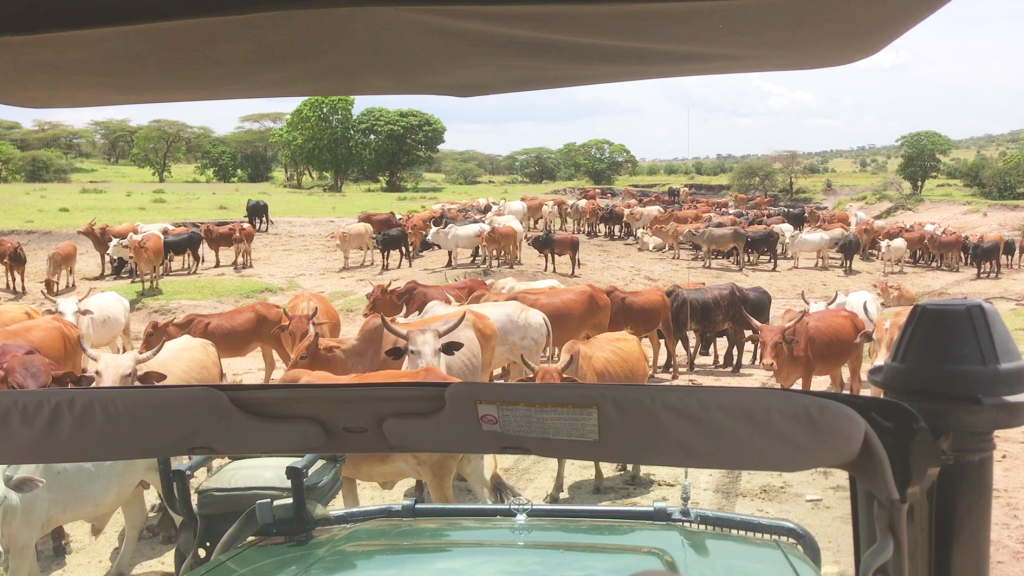Nick Dale and his friends came across this massive herd while in Kenya. Cows are a common sight, but they’re still incredible to see.

Nick Dale, a wildlife photographer, came across a massive herd of cows while visiting Maasai, Kenya. These animals are a common sight, but each viewing takes one’s breath away.
Also known as Zebu cattle, these cows are characterized by their humped backs, large dewlaps, and resistance to drought. They’re usually brown or white and have a distinctive, hardy appearance.
For the Maasai people, cattle are central to their way of life, symbolizing wealth, status, and prosperity. Cows are often used in traditional ceremonies, and dowries, and are considered a form of currency.
The Maasai diet traditionally relies on cow’s milk and blood. They draw the blood from live cattle using a precise and humane technique, and it’s often mixed with milk for a nutritious drink.


Like most cattle, Maasai cows aren’t afraid of humans. For this reason, they don’t seem bothered by the car coming close to them. They don’t even care enough to move out of the way!
Maasai herders, known as morans, use traditional techniques to manage and protect their cattle, including using spears and sticks to guide the herds and protect them from predators.
Maasai cows are well adapted to the harsh environments of East Africa. They can survive on minimal water and food during dry seasons, making them invaluable to the Maasai people.
The Maasai face challenges such as land encroachment, climate change, and conflicts with wildlife, which affect their cattle herding practices and way of life.
